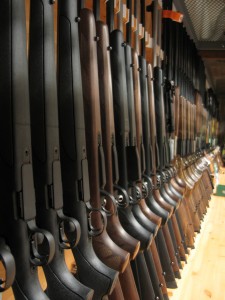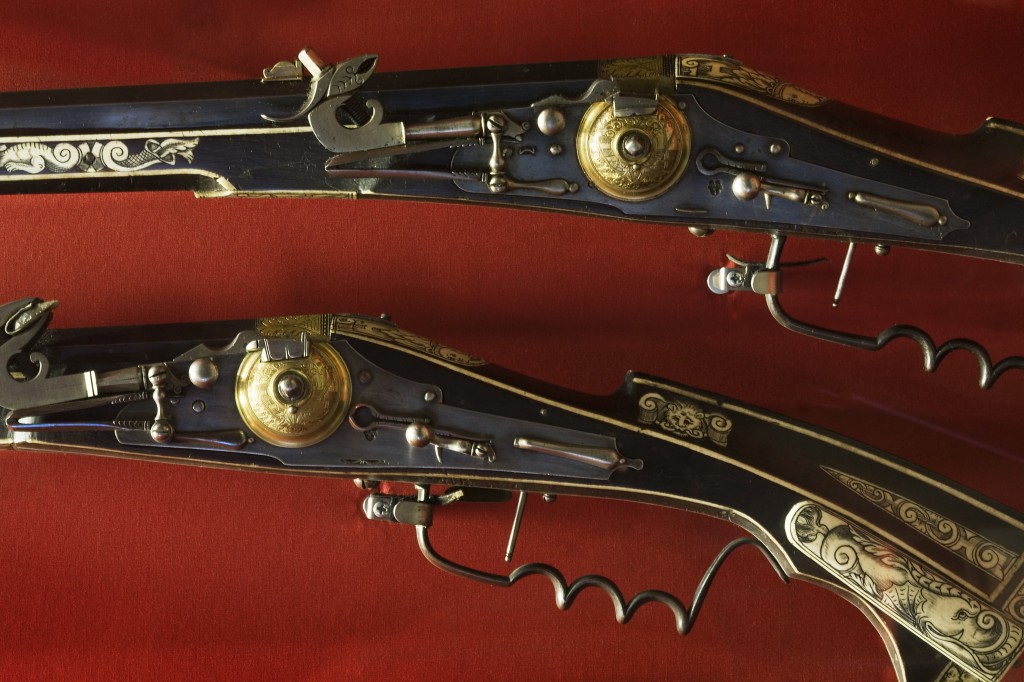Importing Firearms Into U.S.
Importing firearms into the U.S. is authorized by law under certain conditions. The importable firearms categories are “narrow”, and will usually always require an ATF import permit. Falling into this narrow spectrum are “antique firearms” and collector types know as “Curio and relic” (C&R). The requirements for importing firearms into the U.S. can be quite complicated for the average person. This brief article deals strictly with the importation of antiques and C&R type firearms.
Firearms Importation Terms and Definitions: Antique / Curio Relic
Definition of terms: Antique firearm
Before taking up the requirements to import antique firearms and collector type firearms into the U.S., it’s important to understand the definition of the terms.
27 CFR § 478.11 defines an “antique” firearm;
“Any firearm not designed or redesigned for using rim fire or conventional center fire ignition with fixed ammunition and manufactured in or before 1898 (including any matchlock, flintlock,percussion cap, or similar type of ignition system or replica thereof, whether actually manufactured before or after the year 1898) and also any firearm using fixed ammunition manufactured in or before 1898, for which ammunition is no longer manufactured in the United States and is not readily available in the ordinary channels of commercial trade.”
The definition of the term “firearm”, “…does not include and antique firearm” (18 U.S.C. § 921). Therefore an “antique firearm” is not a “firearm” as defined by the Gun Control Act.
Curio and Relic;
27 CFR §478.11 defines firearms classified as “Curios and relics” (C&R).
The definition is lengthy, therefore the reader should click the link to go directly to the regulation and view the specific language of the definition. In essence, the C&R classification will be granted to “firearms manufactured at least 50 years prior to the current date”; firearms classified as C&R by certain experts; and firearms that by some unique virtue, rarity, or other novel characteristic fall within the C&R category as determined by ATF.
ATF Publication 5300.11 is a guide that lists firearms currently classified as C&R as well as pertinent regulations.

This is a Service – Not a FFL kit.
Free Consultation from a former ATF Investigator – 12 Years with ATF
No charge for disabled Vets
Toll Free: 1-800-932-1979
The terms used in this article refer to firearms that are not regulated under the National Firearms Act (NFA). It’s important to understand the distinctions because it’s possible to possess a firearm that may be generally recognized as an antique, but due to it’s current configuration, is regulated under the NFA, and subject to all the restrictions and registration requirements of the NFA.
Importing antique firearms
Firearms meeting the antique definition under the Gun Control Act and not regulated under the NFA can be imported into the U.S. without the need for a permit from ATF. An “antique” is not a “firearm” by definition, and therefore is exempt from the requirements pertaining to the importation of firearms. Ensure that there is sufficient proof that a firearm you may wish to import falls under the definition of “antique”. U.S. Customs and Border Protection (CBP) may require such proof prior to releasing the antique into the U.S.
Importing Curio and Relic firearms
Licensed firearms collectors:
Under the Gun Control Act (GCA), a licensed Collector of Curio and Relic Firearms may import firearms “occasionally” without the need to become licensed as an importer of firearms, if the occasional importation is for the enhancement of a personal collection. The collector must have an approved ATF Form 6 as required for any other firearm regulated under the GCA. Persons who would like to import firearms classified as curio and relic firearms as a business, must be properly licensed as a Type 08 or 11 Importer.
The licensed collector must follow all other law and regulations pertaining to the importation of firearms by Federal Firearms Licensees (FFL).
Importation of Curio and Relic firearms by non-licensees
Firearms classified as C&R are “firearms” as defined by the GCA. Therefore, importation into the U.S. by a non licensee would require the services of a FFL unless the person can show that the firearm was exported by them at some point. The person must prove to CBP that the firearm to be imported was exported by the person seeking to now import the firearm.
Licensed Firearms Importers ( FFL Type 08 and Type 11)
Licensed importers must execute the ATF Form 6 for the importation of C&R firearms. Licensed importers must be cautious to follow all applicable regulations once firearms are released from CBP.
Licensees must ensure that the firearms are recorded in required records and marked properly. This is a critical step in the process that ATF will verify during compliance inspections. Failure to accurately record and mark imported firearms is considered a public safety violation, and FFLs who are deficient in this area risk revocation of their licenses.
How to get a firearm included in the C&R list
I believe a particular firearm should be included as a C&R firearm, but it currently isn’t. Does the law provide a way for me to request the firearm be added to the C&R list?
27 CFR § 478.26 “Curio and relic determination”, provides a method to petition the Director of ATF to determine if a particular firearm should be included in the C&R list. Obtaining a determination requires a person to submit a written request to the Director of ATF. The petitioner must include “a complete and accurate description of the firearm”. The regulation also requires the submission of photographs, and indicates ATF may want to examine the firearm prior to authorizing the inclusion. 27 CFR § 478.116 provides for a conditional importation of firearms for the purpose of ATF examination and determination of importability.
© 2014 Firearms Licensing and Consulting Group, LLC; FFL Consulting Group; FFLconsultinggroup.com. See Privacy information at the link provided above.
